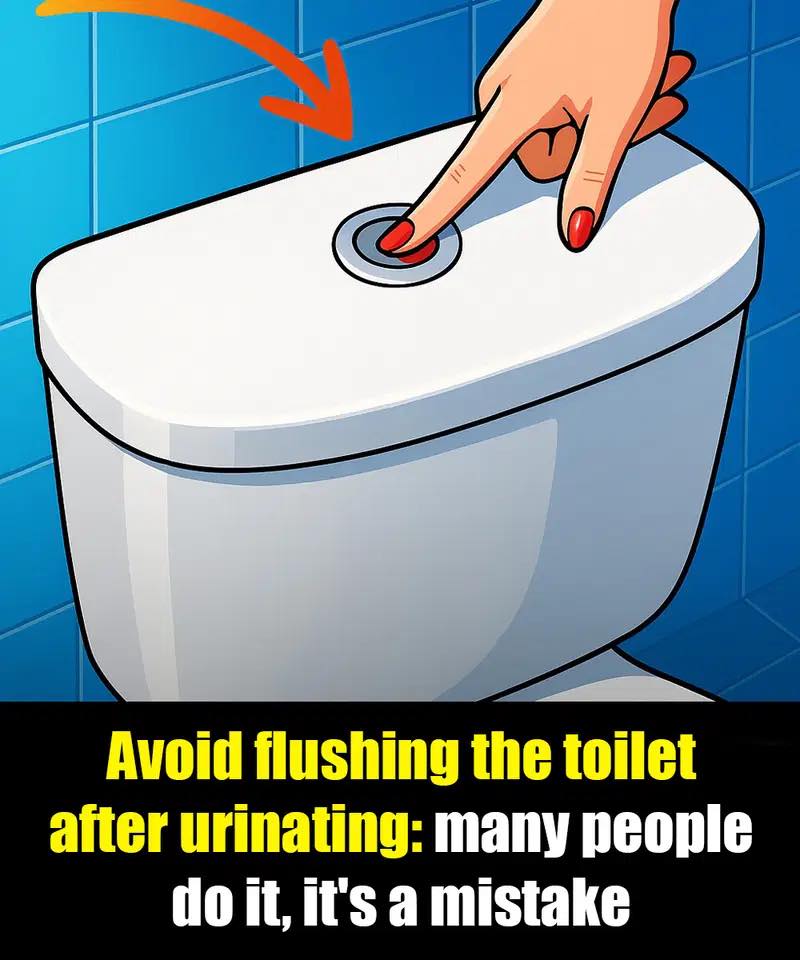Flushing the toilet after urinating is second nature for most of us. We do it automatically, associating it with cleanliness, hygiene, and proper etiquette. But what if this routine habit isn’t as beneficial as we think?
In an era where clean drinking water is becoming increasingly scarce and environmental concerns are paramount, it’s time to reevaluate some of our daily practices. One such habit is flushing the toilet every time we urinate.

Let’s explore why this seemingly innocuous action might not be as harmless or sustainable as it appears, and consider alternatives that can benefit both the environment and your wallet.
1. The Aerosol Effect: Invisible Yet Impactful
When you flush the toilet, especially with the lid open, it’s not just water that goes down the drain. The act of flushing generates a phenomenon known as the “aerosol effect,” where tiny droplets are propelled into the air. These microdroplets can contain traces of urine, bacteria, and other microorganisms, settling on nearby surfaces like toothbrushes, towels, cosmetics, and even your phone.
Research has shown that flushing can disperse bacteria such as E. coli into the air, increasing the risk of exposure, particularly in small, poorly ventilated bathrooms. To mitigate this, it’s advisable to always close the toilet lid before flushing.
2. Water Waste: An Unnecessary Luxury
Each flush of a standard toilet uses between 6 and 10 liters (1.6 to 2.6 gallons) of drinking water. If a household of four flushes after every urination, this can amount to over 200 liters (approximately 53 gallons) of water wasted daily.
Consider this: the water used for flushing is the same potable water that comes out of your tap. In some regions, toilet flushing accounts for more than 25% of total household water consumption. With water scarcity affecting many parts of the world, it’s worth reconsidering whether this is the best use of such a vital resource.
3. Sustainable Alternatives: Maintaining Hygiene Without Excess
Not everyone can immediately upgrade to eco-friendly toilets, but adopting more conscious habits can make a significant difference. Here are some practical suggestions:
-
Adopt the “If it’s yellow, let it mellow” approach: At home, especially when there’s no strong odor, consider not flushing immediately after urinating. This simple practice can lead to substantial water savings.
-
Install dual-flush toilets: These modern toilets offer two flushing options—one for liquid waste and another for solid waste—allowing you to use only the necessary amount of water. Dual-flush toilets can reduce water consumption by up to 67%.
-
Reuse water for flushing: Collecting water from activities like showering (while waiting for it to heat up) can be repurposed for flushing the toilet, reducing overall water usage.
-
Maintain cleanliness without excessive flushing: Regularly cleaning the toilet with appropriate products can keep it hygienic, even if you don’t flush after every use.
4. Is Urine Dangerous If Left Unflushed?
There’s a common belief that urine is entirely sterile, which isn’t entirely accurate. While urine does contain waste products filtered by the kidneys, it’s primarily composed of water and isn’t highly hazardous.
Allowing urine to sit in the toilet for a few hours doesn’t pose significant health risks, provided the bathroom is well-ventilated and cleaned regularly. Odors typically develop over time and with multiple urinations, so in smaller households, it’s feasible to space out flushes without compromising hygiene.
5. The Tangible Benefits of Changing This Habit
By adjusting this one habit, you can reap several benefits:
-
Lower water bills: Reduced flushing leads to decreased water consumption, translating to cost savings.
-
Environmental conservation: Using less water helps preserve this precious resource and reduces the strain on water treatment facilities.
-
Increased awareness: Being mindful of water usage fosters a greater appreciation for environmental sustainability.
-
Reduced surface contamination: Minimizing aerosol dispersion by closing the lid and reducing flush frequency can decrease the spread of bacteria in your bathroom.
Conclusion: Smart Choices for a Sustainable Future
We’re not suggesting you never flush the toilet again, but rather that you do so thoughtfully. Recognizing when it’s necessary to flush and when it’s not can contribute to a more sustainable lifestyle.
In a world where every drop counts, small changes in our daily routines can lead to significant environmental benefits. Start today by rethinking your flushing habits and encourage others to do the same. Together, we can make a difference—one flush at a time.





